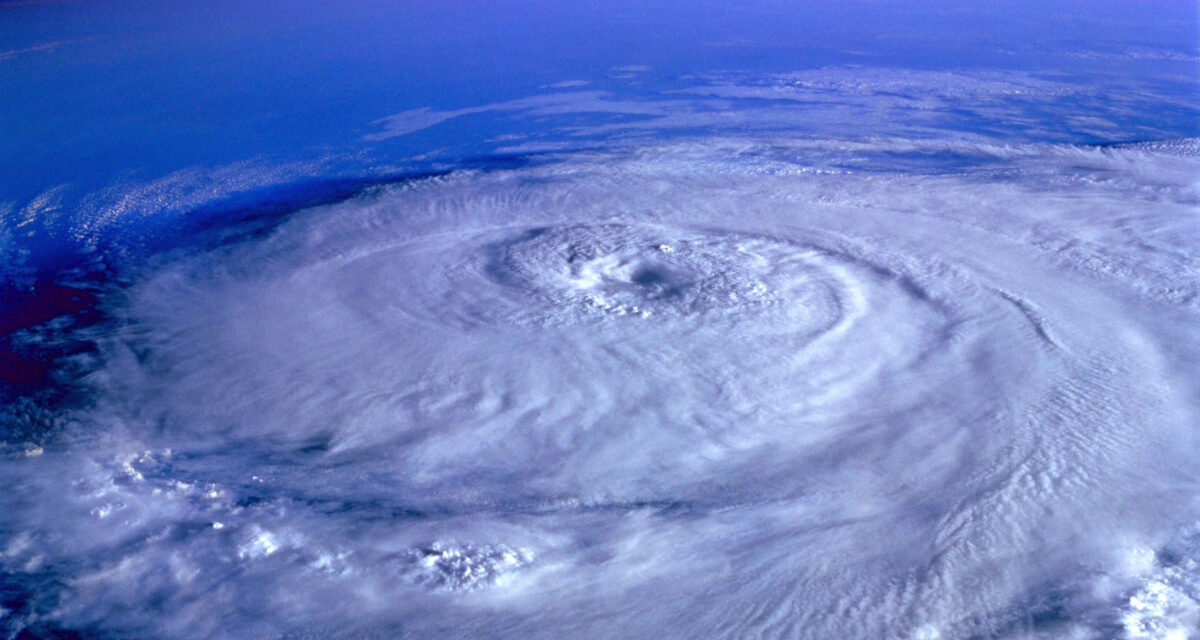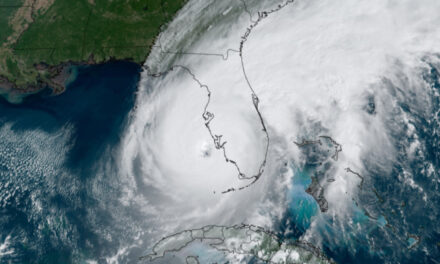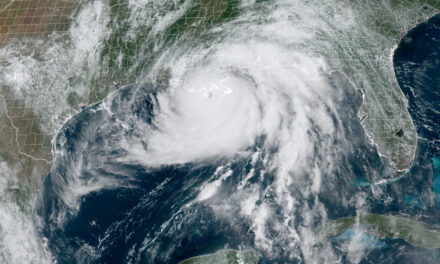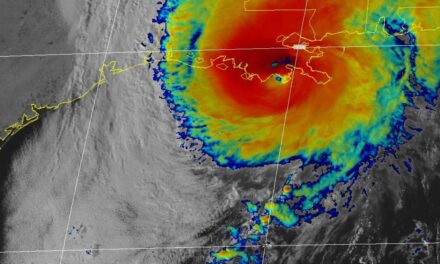A Category 5 Hurricane as seen from space with a well-defined eye surrouned by dense clouds. Lightning causes the bright spots near the eye and along the inward-spiralling bands of clouds. NOAA Satellite Photo.
6 in 10 Chance for an Above Average 2021 Atlantic Hurricane Season
Colorado State University Tropical Weather and Climate Research released their first discussion on the upcoming 2021 Atlantic Hurricane Season on December 10, 2020. The discussion comes on the heels of a very strong and active season that generated 30 named storms.
Six months in advance of the hurricane season start, the December discussion focuses on what could happen in the upcoming season and assigns a percentage chance to each possible scenario. The primary factors considered are the El Niño-Southern Oscillation and Atlantic Multi-Decadal Oscillation.
For the 2021 Atlantic Hurricane Season, CSU assigned a 25 percent chance for a very strong season and a 35 percent chance for an above average season without the formation of an El Niño.
Last April, the forecast included 16 named storms, 8 hurricanes, and 4 major hurricanes. The formation of a La Nina in the eastern Pacific Ocean fueled a far more active season than anyone anticipated.
The current phase of the El Niño-Southern Oscillation remains in a La Niña state. Computer models disagree on the future state of ENSO, but CSU believes the La Niña conditions will transition to a neutral state. In addition to ENSO, the Atlantic Multi-Decadal Oscillation or AMO will continue in an active phase, contributing to another above average or very strong Atlantic Hurricane Season.
Another possibility includes a lingering La Niña which could increase activity for another very active season.
An average Atlantic Hurricane Season includes 12 named storms, 6-7 hurricanes, and 2-3 major hurricanes.
December qualitative discussion of 2021 Atlantic #hurricane season from @ColoradoStateU has been released. First formal forecast will be released by CSU on April 8, 2021.https://t.co/ynRBRT68rZ pic.twitter.com/ysUAVGmt9f
— Philip Klotzbach (@philklotzbach) December 10, 2020
Philip J. Klotzbach is the Lead Research Scientist at the Colorado State University Department of Atmospheric Science.
The El Niño-Southern Oscillation (ENSO) is an irregular cycle of warmer and cooler sea temperatures in the eastern Pacific ocean. Cooler temperatures (La Niña) promote more tropical cyclones in the Atlantic Basin. Warmer temperatures (El Niño) Lower Atlantic cyclone formation.
Seasonal #hurricane forecast from @ColoradoStateU calls for above-average season: 16 named storms, 8 hurricanes & 4 major (Cat 3+) hurricanes. Reasons for above-average forecast include anticipated lack of #ElNino and warmer than normal tropical Atlantic.https://t.co/jZGKiBmkic pic.twitter.com/sX5C21JxvX
— Philip Klotzbach (@philklotzbach) April 2, 2020
2021 Hurricane Season Outlook Compared to 2020 Hurricane Season Outlook
In December 2019, CSU issued its discussion on the outlook for the 2020 Atlantic Hurricane Season. All indications pointed toward an average or slightly above average season. A big question variable for the season lay in the trend for the El Niño-Southern Oscillation (ENSO.) Cooled ocean temperatures in the Pacific would indicated more cyclonic activity in the Atlantic Basin. In December, models indicated a neutral phase, but long-range forecasts of ENSO are uncertain and various forecast models disagreed.
By the time CSU issued its April, 2020 forecast, a trend toward a cooler but still neutral ENSO increased possibilities for a season well above average. CSU also indicated the possibility of a weak La Nina phase.
The December 2019 discussion was considerably more optimistic than this year. Overall, the outlook looked very good for an average or slightly above average season. The cooler state of ENSO made it somewhat likely for more storms than usual and less likely for a below average season.
Our 2020 discussion and outlook favors an above average season with cooler Pacific sea temperatures and an above average AMO. Overall, we can probably expect 12 to 16 Named Storms of which 6 to 8 will become hurricanes and 2 to 3 will further strengthen to category 3 or higher.
However, if the La Niña continues into summer and through the season peak, 2021 could turn into another very active season with many tropical cyclones.












